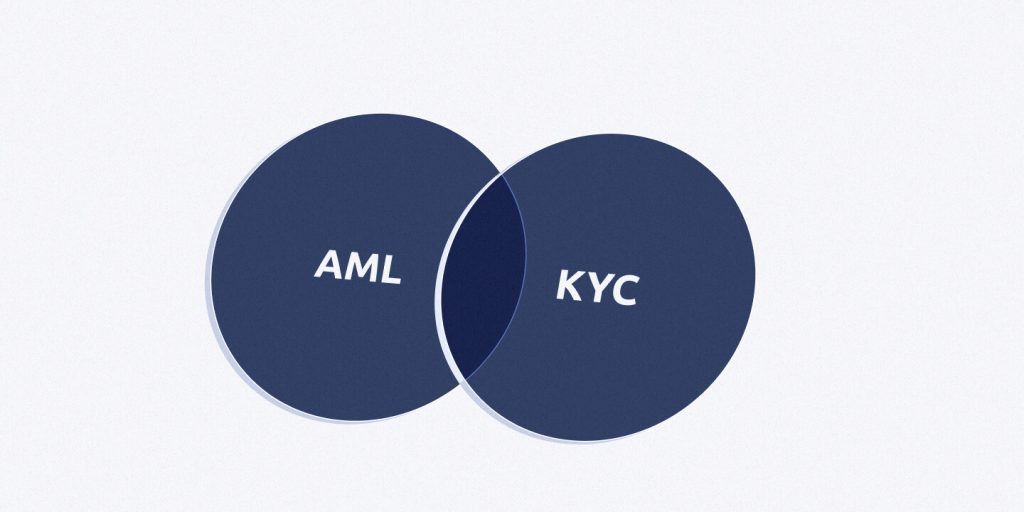Introduction
The advent of cryptocurrencies has brought about a paradigm shift in the global financial ecosystem, offering unprecedented opportunities for innovation, financial inclusion, and decentralized transactions. However, the rise of digital currencies has also introduced a host of challenges, particularly in the realm of regulatory compliance. Among these challenges, the implementation of Anti-Money Laundering (AML) and Know Your Customer (KYC) regulations stands out as one of the most pressing concerns for cryptocurrency exchanges and the broader crypto industry.
AML and KYC regulations have long been essential components of the traditional financial system, aimed at preventing money laundering, terrorist financing, and other illegal activities. As cryptocurrencies become more integrated into mainstream finance, ensuring compliance with these regulations is crucial for maintaining the integrity of the industry, safeguarding user interests, and fostering trust among regulators and investors.
This article will delve into the importance of AML/KYC compliance for cryptocurrency exchanges, the challenges they face, and how they can effectively implement the necessary measures to ensure compliance. Furthermore, we will explore the broader implications of these regulations on the industry and provide a roadmap for ensuring that cryptocurrency exchanges remain compliant with international standards.
1. Understanding AML/KYC Regulations
1.1 Anti-Money Laundering (AML)
Anti-Money Laundering (AML) refers to the set of laws, regulations, and procedures that financial institutions and other regulated entities must follow to detect and prevent money laundering activities. Money laundering involves disguising the origins of illegally obtained funds, typically through a series of transactions that make the money appear legitimate. Cryptocurrencies, with their pseudonymous nature and ability to facilitate cross-border transactions, are particularly vulnerable to exploitation for money laundering.
AML regulations aim to:
- Detect suspicious activities: Identifying unusual patterns of transactions that may indicate illicit activities, such as money laundering or terrorist financing.
- Prevent financial crime: By requiring institutions to verify the identity of their customers, monitor transactions, and report suspicious activities, AML regulations reduce the chances of financial crime occurring.
- Ensure compliance with international standards: AML frameworks are designed to meet the recommendations set out by organizations like the Financial Action Task Force (FATF), which provides global guidelines for combating money laundering.
1.2 Know Your Customer (KYC)
Know Your Customer (KYC) refers to the process by which financial institutions verify the identity of their customers to prevent identity theft, fraud, and other illegal activities. KYC regulations are a critical component of the AML framework and are designed to ensure that exchanges and other financial institutions have a clear understanding of their customers’ identities and business activities.
KYC involves several key steps:
- Customer Identification Program (CIP): This involves collecting personal information, such as name, address, date of birth, and government-issued identification, to verify a customer’s identity.
- Customer Due Diligence (CDD): This process evaluates the risks associated with a customer based on their profile, transaction history, and behavior. It involves assessing whether a customer is involved in high-risk activities.
- Ongoing Monitoring: KYC regulations require businesses to monitor customers’ transactions on an ongoing basis to detect unusual or suspicious behavior.
2. Why AML/KYC Compliance is Crucial for Cryptocurrency Exchanges
2.1 Preventing Illegal Activities
The most immediate and crucial reason for enforcing AML and KYC measures in cryptocurrency exchanges is to prevent illegal activities such as money laundering and terrorist financing. Cryptocurrencies, particularly those offering privacy features, have often been used by criminal organizations to move illicit funds across borders without detection.
By implementing AML and KYC protocols, exchanges ensure that they are not unknowingly facilitating illegal activities, protecting both their users and the broader financial system.
2.2 Ensuring Regulatory Compliance
Global regulators are increasingly turning their attention to the cryptocurrency market, and many jurisdictions are enacting specific rules and regulations aimed at ensuring that crypto exchanges comply with AML and KYC requirements. Countries such as the United States, European Union, and Japan have introduced stringent regulations, and failing to comply can result in hefty fines, legal consequences, and reputational damage.
Ensuring that an exchange meets regulatory expectations is vital to avoid the risk of regulatory crackdowns or sanctions that can severely hinder its operations.
2.3 Fostering Trust and Legitimacy
As cryptocurrencies continue to gain mainstream adoption, establishing trust and legitimacy is essential for any cryptocurrency exchange. AML and KYC measures help ensure that users can transact with confidence, knowing that the exchange is committed to maintaining a secure and compliant platform.
For investors, users, and partners, an exchange that adheres to AML/KYC protocols signals that the platform is operating within the bounds of the law, making it more attractive to institutional investors, banks, and other regulatory bodies.

3. Challenges Faced by Cryptocurrency Exchanges in AML/KYC Compliance
3.1 Regulatory Divergence
One of the most significant challenges faced by cryptocurrency exchanges is the lack of uniformity in regulatory requirements across different countries and jurisdictions. Some countries have comprehensive regulatory frameworks for cryptocurrency exchanges, while others have little or no regulation at all. This creates an environment where exchanges must navigate a complex and fragmented regulatory landscape to ensure compliance with AML/KYC standards.
For example, while countries like the U.S. and European Union have well-defined AML/KYC requirements for crypto exchanges, many countries in Africa and Southeast Asia have either no regulatory framework or have not yet implemented clear guidelines. As a result, exchanges operating globally may face difficulties in ensuring compliance with different sets of rules, increasing the complexity of their operations.
3.2 Privacy and User Experience Concerns
KYC procedures require the collection of sensitive personal data, which can raise privacy concerns among users. Many cryptocurrency users value the anonymity and privacy that digital currencies can offer, and requiring detailed personal information could potentially deter them from using certain platforms.
Exchanges must balance the need for compliance with AML/KYC regulations with the desire to provide users with a seamless and secure experience. This often involves implementing robust encryption methods, secure data storage protocols, and transparent privacy policies to reassure users about the safety of their personal information.
3.3 High Operational Costs
Implementing AML and KYC measures requires substantial investment in both technology and human resources. For many exchanges, especially smaller or newly established platforms, the costs associated with setting up KYC/AML compliance programs can be significant. This includes the need for specialized software solutions for customer identity verification, ongoing transaction monitoring, and the hiring of compliance officers and legal advisors.
These costs can be especially burdensome for platforms operating on tight margins, and the need to continually update compliance practices to adhere to evolving regulations further increases operational expenses.
4. How Cryptocurrency Exchanges Can Ensure AML/KYC Compliance
4.1 Implement Robust Customer Verification Systems
To ensure AML/KYC compliance, exchanges must have a comprehensive and effective customer verification process. This involves implementing advanced identification systems that can verify government-issued IDs, passports, and other personal information with a high degree of accuracy. Some common practices include:
- Biometric verification: Integrating biometric systems, such as facial recognition or fingerprint scanning, to enhance user identity verification.
- Third-party verification services: Utilizing trusted third-party identity verification providers to cross-check and validate customer information.
- Digital ID solutions: Leveraging digital identity solutions, such as eKYC (electronic Know Your Customer), to expedite the verification process while maintaining security and privacy.
4.2 Develop Ongoing Transaction Monitoring and Risk Assessment
AML/KYC compliance doesn’t stop with customer onboarding; exchanges must also monitor users’ transactions in real-time to detect any suspicious activity. Transaction monitoring software can analyze patterns of behavior, such as unusual deposit or withdrawal amounts, rapid trading, or activity across multiple accounts, and flag these transactions for further investigation.
Exchanges should also develop a robust Customer Due Diligence (CDD) process to assess the risk level of individual customers. This could involve:
- Enhanced Due Diligence (EDD): For high-risk customers or transactions, exchanges should apply more rigorous checks, including deeper background checks and transaction histories.
- Risk-based approach: Tailoring the level of scrutiny based on the customer’s profile, transaction history, and geographical location, allowing for more efficient and targeted monitoring.
4.3 Implement a Compliance Team and Legal Framework
A dedicated compliance team should be established within the exchange to manage AML/KYC obligations and stay up to date with changing regulatory requirements. This team should consist of professionals with expertise in financial crime prevention, regulatory reporting, and legal matters.
Exchanges must also establish internal policies and procedures for dealing with suspicious activities, including:
- Reporting suspicious transactions to the relevant authorities.
- Maintaining detailed records of KYC documentation and transaction histories.
- Training employees on compliance-related matters and best practices.
4.4 Leverage Technology for Automation
Automation can significantly reduce the burden of manual compliance processes. Exchanges can implement automated solutions for KYC verification, risk profiling, and ongoing transaction monitoring. This not only improves the efficiency of compliance efforts but also reduces human error and minimizes operational costs.
For example, AI-powered algorithms can flag high-risk transactions in real-time and provide compliance officers with detailed reports, enabling quicker decision-making.
4.5 Collaborate with Regulatory Authorities
To ensure ongoing compliance, exchanges should establish proactive relationships with regulators and ensure that they are aligned with the latest regulatory updates. Engaging with regulatory bodies and industry associations can help exchanges stay informed about evolving requirements and demonstrate their commitment to compliance.
Some exchanges also voluntarily undergo third-party audits and certifications to verify their compliance with AML/KYC standards. This not only strengthens the exchange’s reputation but also ensures they meet or exceed regulatory expectations.
5. Conclusion
As the cryptocurrency market continues to grow,
ensuring compliance with AML and KYC regulations has become an essential part of maintaining trust, legitimacy, and long-term viability. While the challenges faced by exchanges in meeting these regulatory standards are significant, the benefits far outweigh the risks. By adopting robust compliance measures, leveraging advanced technology, and building strong relationships with regulators, cryptocurrency exchanges can mitigate the risks of money laundering and fraud while creating a secure, transparent, and trustworthy environment for users.
In the end, regulatory compliance is not just about adhering to the law—it is about building a sustainable and legitimate cryptocurrency ecosystem that fosters innovation while protecting users and the broader financial system.

















































